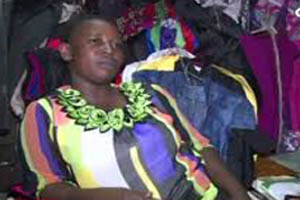
Kenyan textiles industry set to grab bigger share of global market
YarnsandFibers News Bureau 2014-12-03 15:00:00 – KenyaTextiles have been a small part of the Kenyan economy, but the sector has the potential for growth, according to Adan Mohamed, industrialization minister. The government is trying to entice textile manufacturers with a hefty new subsidy, this year slashing the cost of power from Ks18 ($0.20) a kilowatt hour to Ks9.
Mohamed believes the sector can create 300,000 jobs if the country can only give it the fillip it needs to grab a larger slice of the global clothing market , estimated by the International Textile Manufacturers Federation to amount to $1.5 trillion.
Kenya certainly has its best chance to do so in years, thanks to shifting global trends. It all boils down to China, which is no longer the factory of the world; it is the market of the world, as per Jas Bedi, ITMF vice-president, who also has a fast-expanding apparel manufacturing company in
Kenya that exports to Europe. While the ITMF says factory wages reach $500 a month along China's coastal rim ($250 in the interior), monthly salaries in the same sector in Kenya are $120-$150.
The industry is under growing ethical pressure too. The death of more than 1,100 workers in the 2013 collapse of a garment factory in Bangladesh is also forcing global buyers to re-evaluate their sourcing. Bangladesh is the second-biggest clothing manufacturer after China and quickly overtook competitors in China, Indonesia and Vietnam thanks to on-time deliveries and cheap pricing. But that is no longer enough. Although wages are low—at $67 a month following a series of riots in the wake of the catastrophe that brought them up from $30—international buyers are reconsidering their strategies.
People are very concerned about building safety in Bangladesh; it's very damaging to a brand if any safety issues are going on in the factories. Africa could be a Greenfield site -- it has water, cotton, labour and green energy. Africa is up against Bangladesh and it makes it all the more compelling, but only if it's done right, and that's going to be the big challenge.
Unlike Bangladesh, African countries also have duty-free access to the US apparel market under the African Growth and Opportunity Act (Agoa). Both jurisdictions have duty-free access to the EU, so African countries still tend to be outcompeted there. Industry leaders such as Bedi are lobbying for a 15-year extension to Agoa when it comes up for renewal next year.
Kenya also faces considerable competition from Ethiopia. Although 46 Asian manufacturers visited Kenya this year—keen to assess the viability of relocating to east Africa to serve large US buyers such as PVH and VF, both of which want to expand their African operations—only one is in serious talks with Kenya.
If the proposed $500 million deal comes off, the textile manufacturer will source geothermal energy at the site, making overheads even cheaper.
But the rest of the visiting party was more taken by Ethiopia, where energy costs are the equivalent of Ks3 a kWh and labour costs are at least half those in Kenya. The government in Ethiopia has also set up functioning business parks for factories.
The Kenyan government is all too aware of the appeal of its neighbour. The key to recognize is that every country has its relative competitiveness ... the market is such that it can accommodate them, said President Uhuru Kenyatta during a meeting with several global buyers, indicating the government's high-level support for boosting the sector.
Some buyers may agree. While Ethiopian workers are unused to life in a factory and managers say labour retention beyond six months is uncertain, Kenyans are expert clothes makers.
Everyone's talking about Ethiopia, but there aren't any good garment manufacturers there and the next business park is not going to be ready until 2017, so people are going to become frustrated,†says a western buyer.
Kenyatta also knows he must address Amiji's concern; they are all working to see how they can reduce the costs of manufacturing in this region. But for Fakhruddin Amiji, who has the largest apparel factory in Kenya, the key to success is pretty simple. All they need is price -- they're hunting for pricing of foreign buyers, mostly from the US, who he hopes will increase the volume of orders they place with him.
Things are already going well for Amiji, whose company, Ashton Apparel, is growing and turns over $100 million a year. The business produces denim for H&M, Walmart and others. The company plans to expand his factory workforce from 10,000 to 14,000 by the end of next year.
Market Intelligence
Ask for free sample Report

experience
Customer Base
dedicated team
Countries Served Worldwide









